Modal Analysis-driven Gaussian Process for a Gait Parameters Estimation and Individuals' classification from CCTV and smartphone camera footages
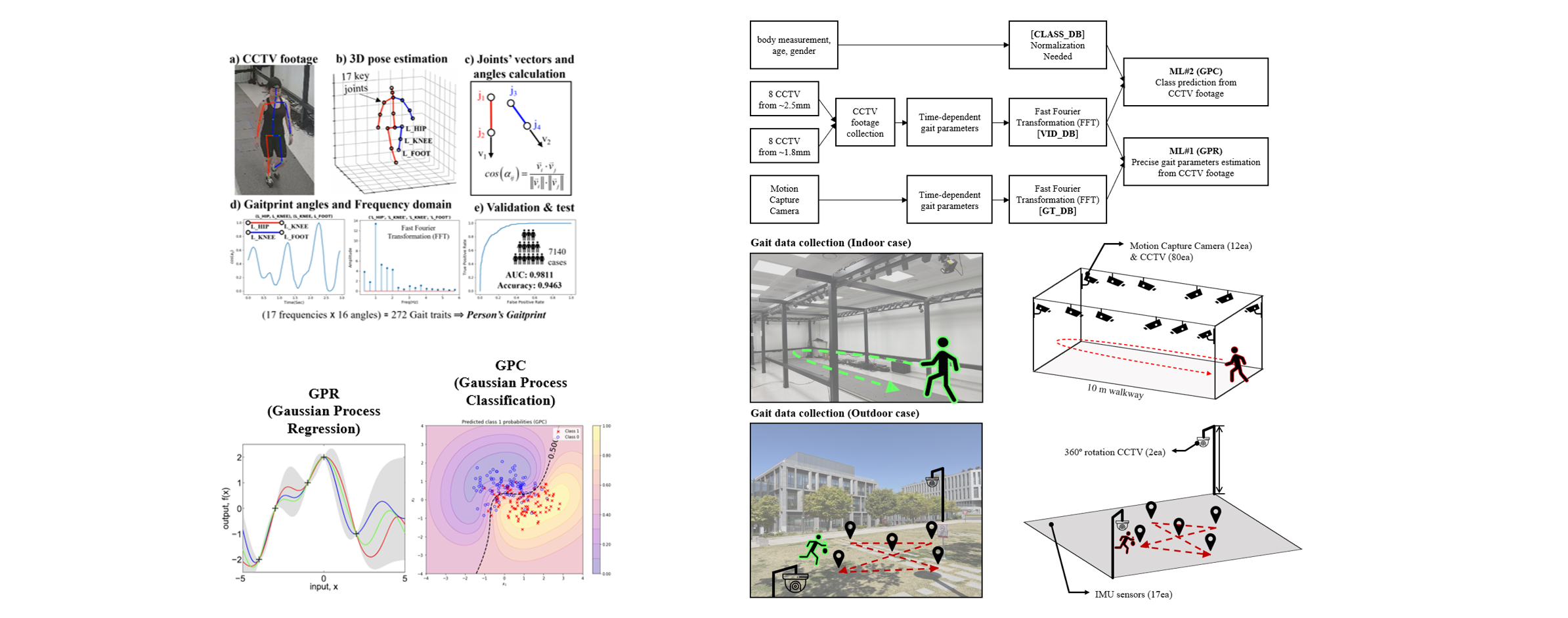
Research target: a machine learning-based algorithm as follows:
- Is trained by linking the gate parameters from CCTV (Openpose-based), MCC, IMU;
- The body measurement, age, and gender [CLASS_DB] of the participants are also included;
- The trained ML model receives, as input, a CCTV or standard video footage;
- Calculates the gait parameters based on the current technology (i.e. Openpose);
- Use the trained ML kernel to convert/corrects the gait parameters to those that would have been measured by MCC or IMU.
Gate data collection:
- Use Motion capture camera & CCTV camera (Indoor case) / IMU sensor & CCTV (Outdoor case) to collect the gait data of various pedestrians.
Development of Foot Diagnosis and Shoe Manufacturing Technology for Disabled
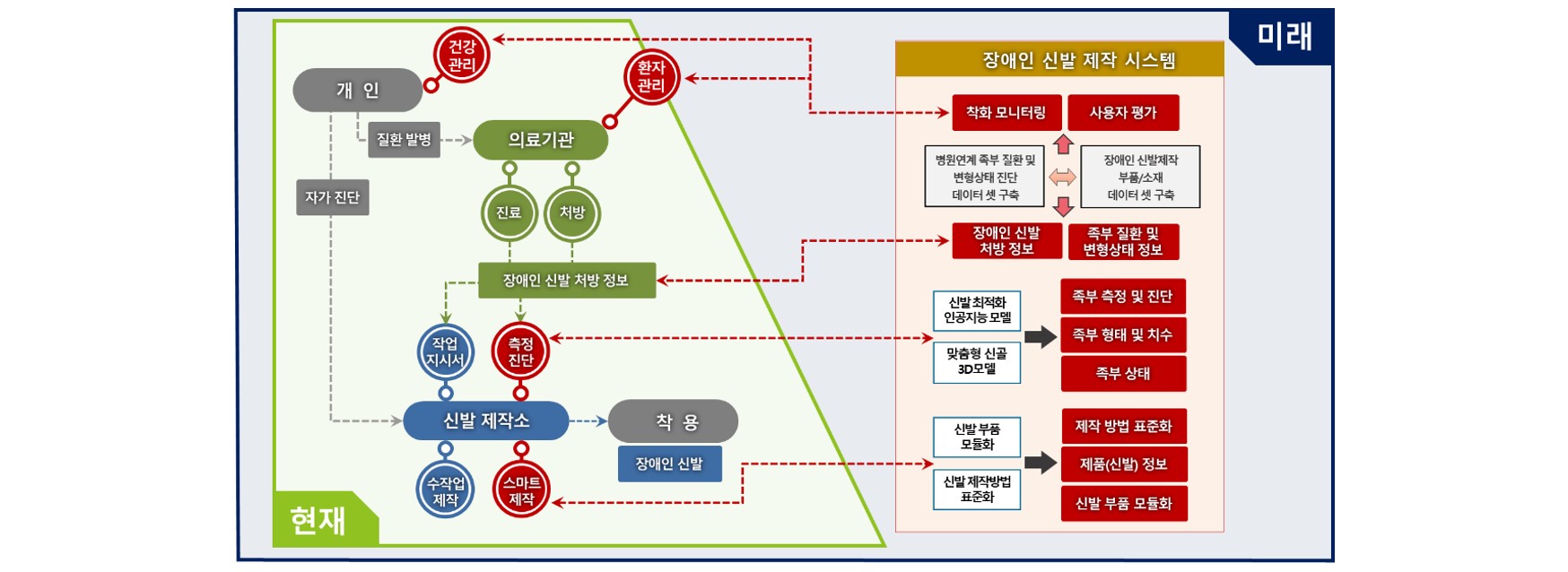
Development of 3D scan-based digitized and quantified foot assessment method;
Development and advancement of plantar surface stiffness measuring equipment;
Establishment of foot diagnosis indicators, establishment and advancement of diagnosis model;
Foot deformation and stress analysis through FEA;
Prediction of Diabetic Ulcer and Stiffness of the Soft Tissue of Foot Using Indentation Device
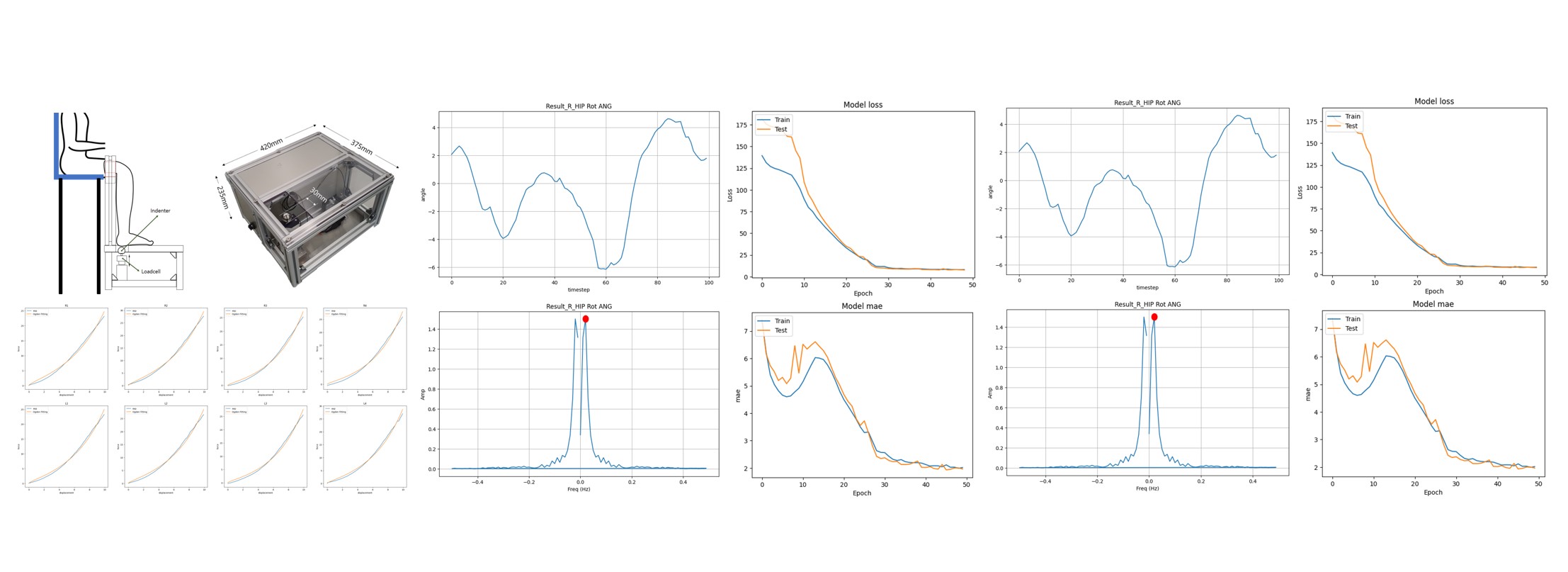
We have studied the changes in plantar soft tissue caused by pathological and biomechanical factors. Plantar soft tissue is a fat tissue without muscle. This tissue can assist in the diagnosis of various diseases because the stiffness changes due to abnormal pressure to the feet or metabolites caused by diabetes. Our laboratory studied the correlation between diabetes ulceration prediction using the mechanical properties of plantar soft tissue obtained through self-made plantar tissue indentation device, and the pressure distribution of the foot and the mechanical properties of plantar soft tissue, and now, we are currently conducting artificial intelligence research to predict the stiffness of plantar soft tissue using the gait characteristics of more than 100 normal people. Through this study, we can expect to distinguish between changes in tissue’s stiffness due to pathological factors and changes in foot stiffness due to epidemiological factors.
Development of Osteoporotic Fracture Risk Assessment by Machine Learning
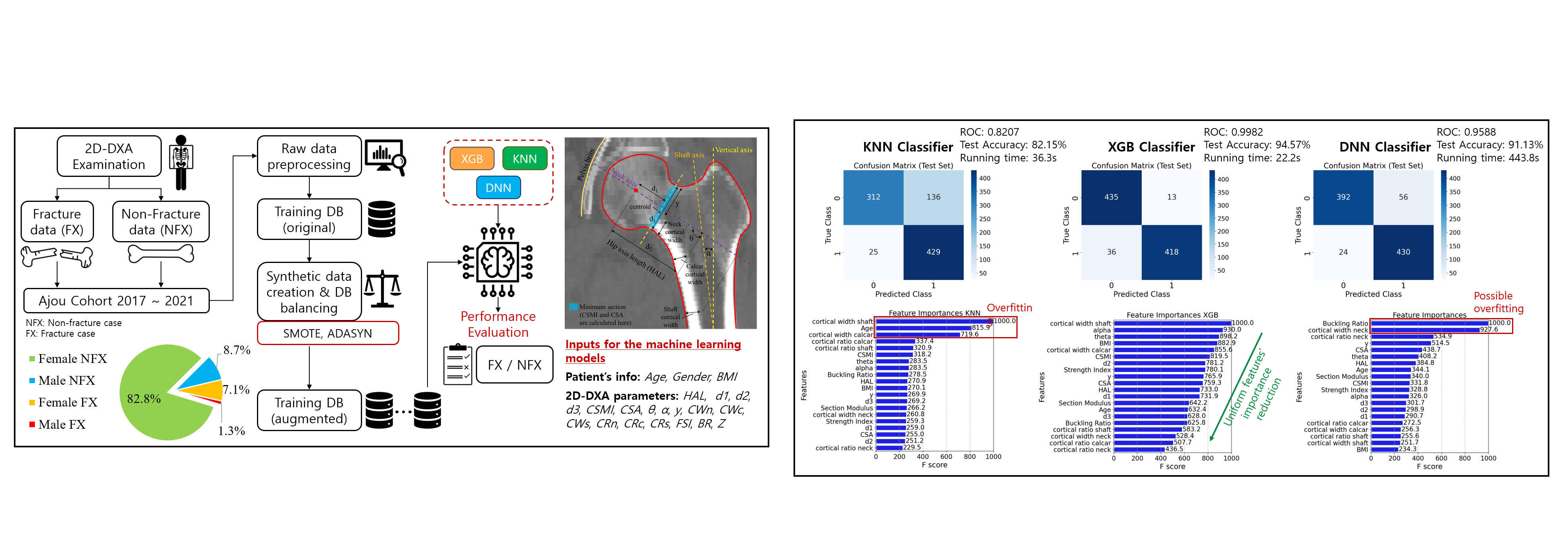
The aim of this research project is the development of supervised machine learning models for the prediction of geometrical and environmental conditions leading to bone fragility.
By working together with a partner hospital, the aim is to develop useful tools for fracture prediction while enhancing the understanding of the complex phenomenon represented by bone fracture.
The current state of the research is based on three high-level supervised machine learning models (Extreme Gradient Boosting, K-Nearest Neighbor, and Deep Neural Network) and already showed high fracture risk prediction accuracy (~95%).
Further development shall aim at develop location-specific (i.e. lower limbs, upper limbs, spine, etc.) fracture risk assessment models to be further combined into an overall risk factor for the patient. In addition, complementary aspects such as synthetic data generation, machine learning model structure, and pre-processing are aimed to be considered as well during the research.
Gait analysis of Proshetic Knee for Transfemoral Amputees
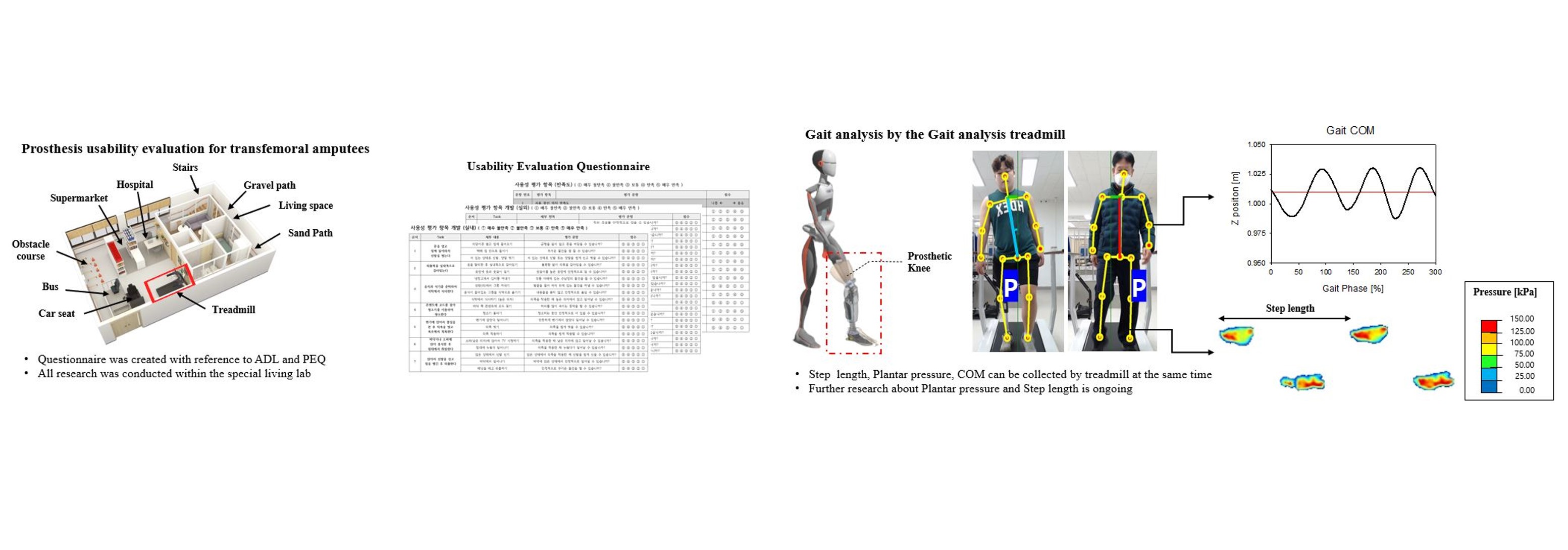
The aim of this research project is the comparison between three lower limb prostheses embedding pneumatic, hydraulic and microprocessor-controlled prosthetic knee (MPK). To assess the performances of the transfemoral amputees with prosthetic knee, a total of 16 transfemoral amputees conducted usability evaluation and gait analysis, and all research was conducted within the living lab. The usability evaluation was conducted through a questionnaire consisting of three categories (daily living, mobility, satisfaction). The questionnaire was created with reference to ADL and PEQ. Further research about correlation between amputee’s Plantar pressure and Step length is ongoing.
Structure Analysis and Optimum Design for Smart Shoulder Joint Exerciser
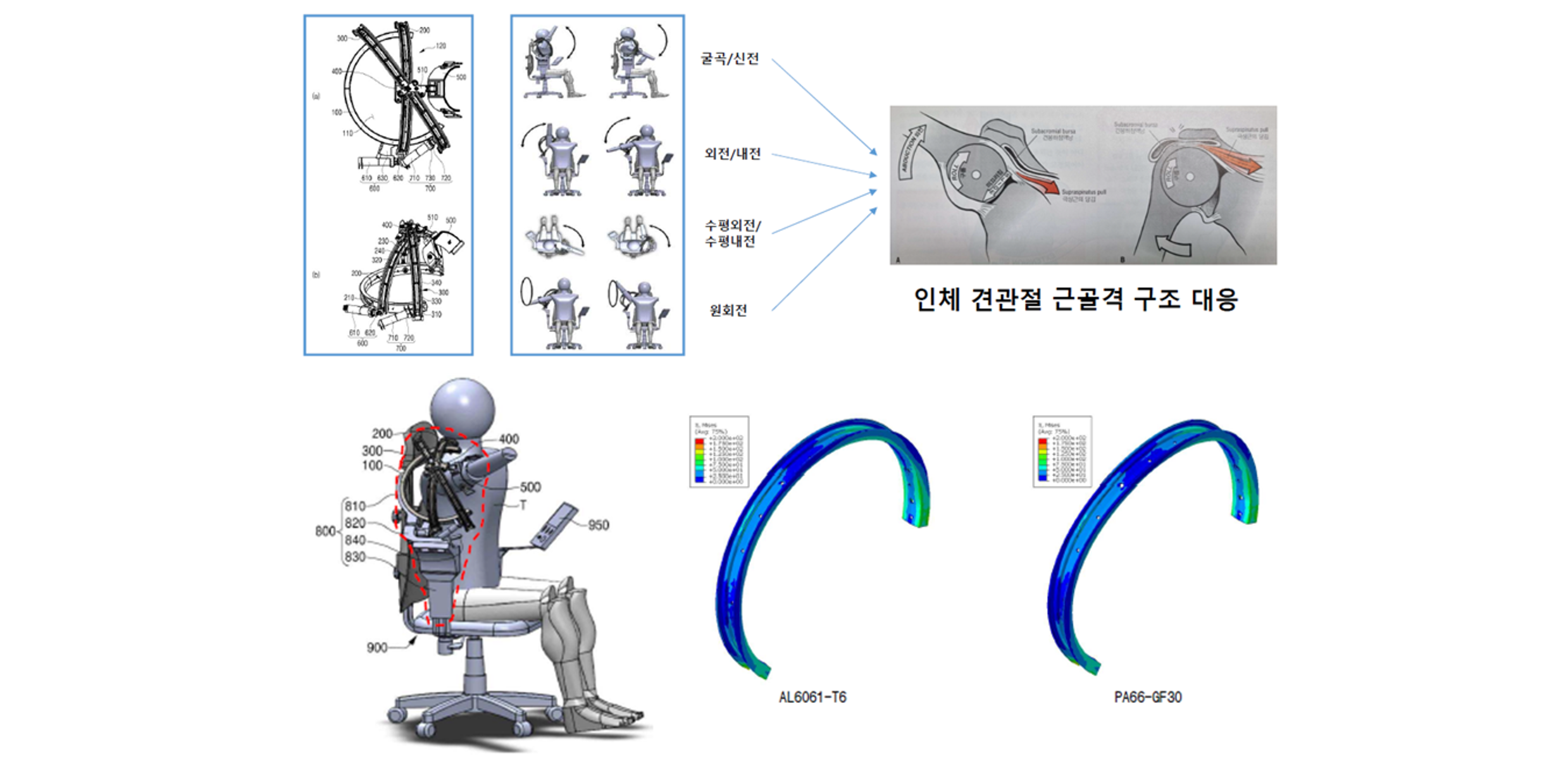
Lightweight and compact smart shoulder joint exerciser frame through topology optimization technique;
Analysis of smart shoulder joint exerciser kinematics according to human body dimensions and training patterns (Flexion/extension, adduction/abduction, horizontal adduction/horizontal abduction);
Kinematic characteristics and feasibility validation for developed smart shoulder exerciser.
Development of Pressure Ulcer Prevention Ultra-Low Noise Type Posture Change Care Robot
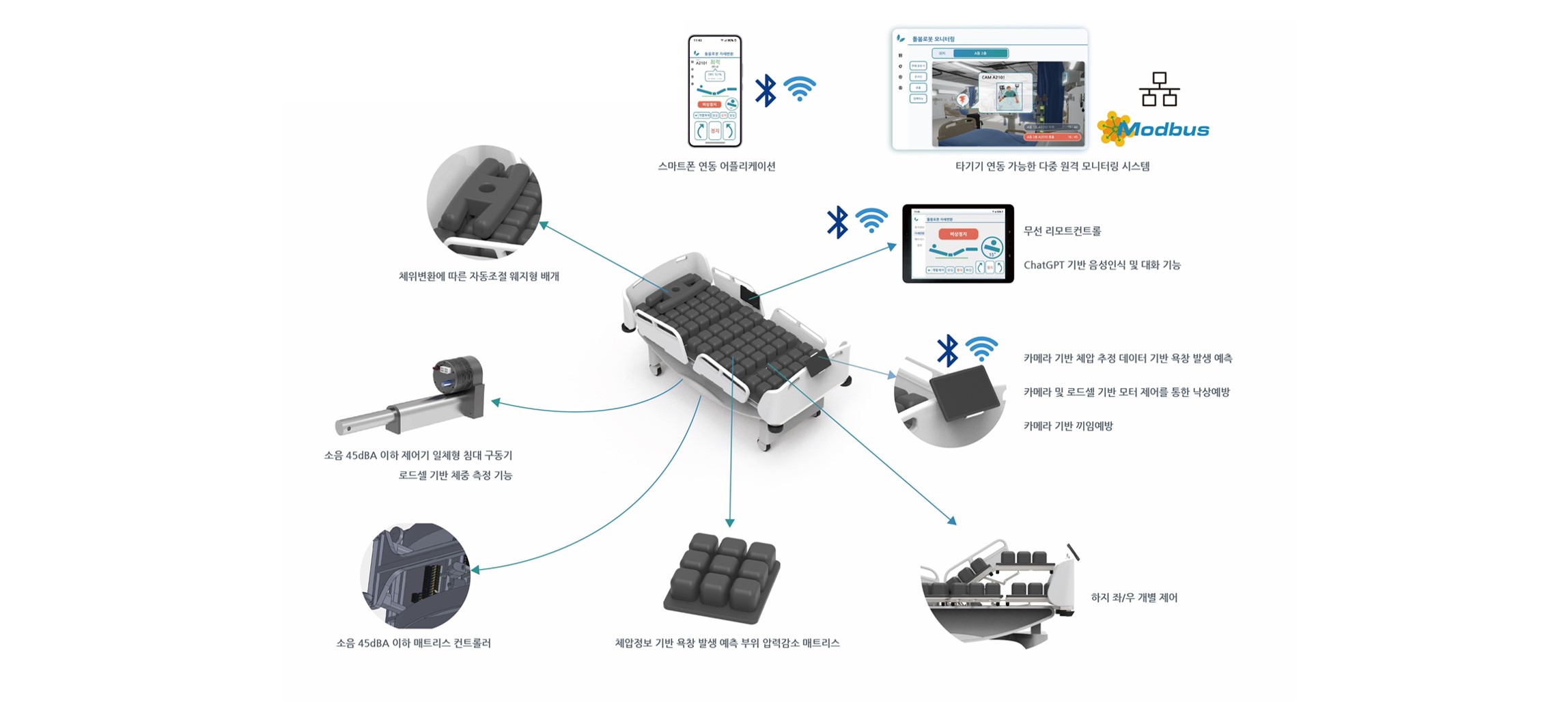
Development of mattress technology based on air-cell structure to reduce pressure on areas prone to pressure ulcer;
Development of sensor data and vision data sync processing technology and deep learning linkage system for collected data;
Estimation of the risk of pressure ulcer and development of an algorithm for predicting the occurrence of pressure ulcer in region of interest;
Adjustment of posture change time point using body pressure and position information and implementation of pressure reduction function in pressure ulcer area;
Implementation of sensor-based weight measurement function and development of efficient body pressure distribution technology linked to care robot posture change.
Development of Power Assist Devices for Wheelchair Users
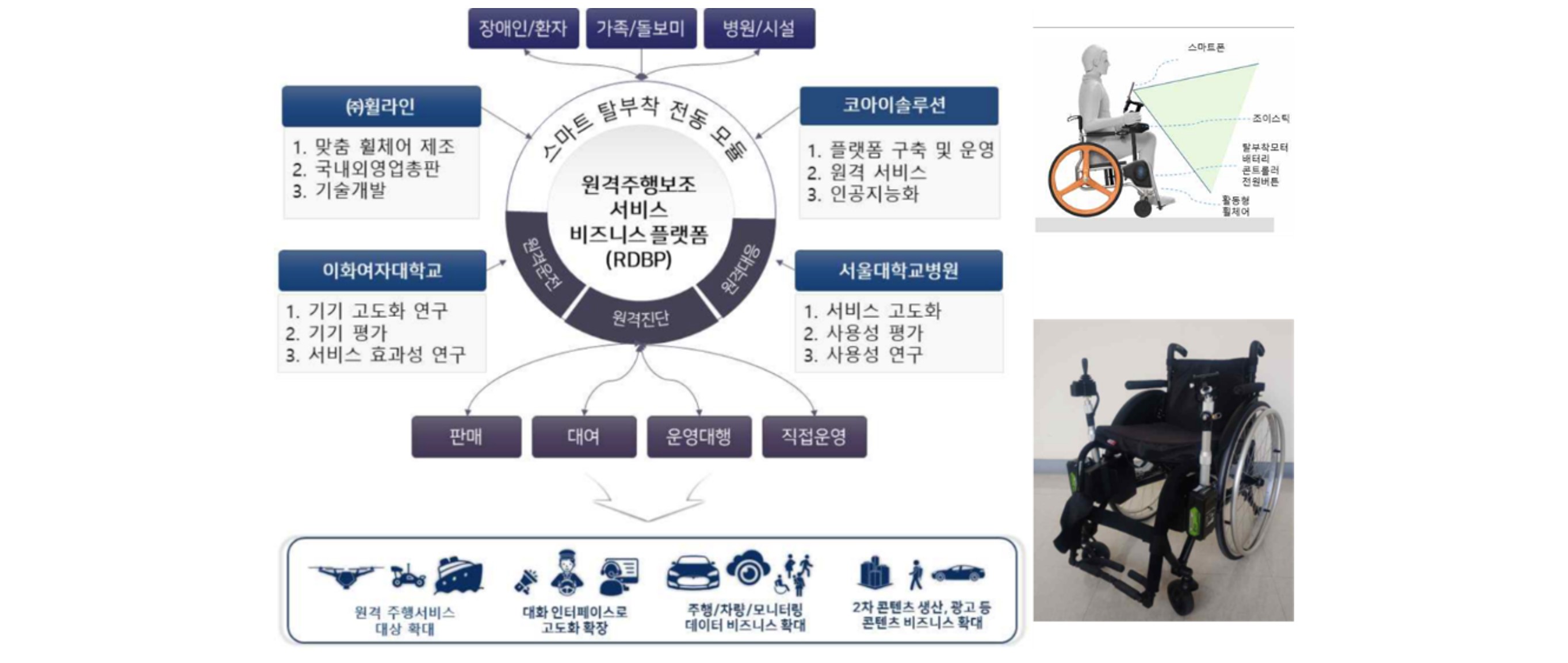
Analysis of complements for detachable power assistance devices for wheelchair;
Analysis for changes in center of gravity and system vibration analysis according to terrain and occupant posture;
Operation controller interface design analysis;
Analysis and application of product design and interface complements.
Integrated Study on Tungsten Particle-Reinforced SLA Methacrylate: Manufacturing Processes, Mechanical Properties and Optimization Strategies
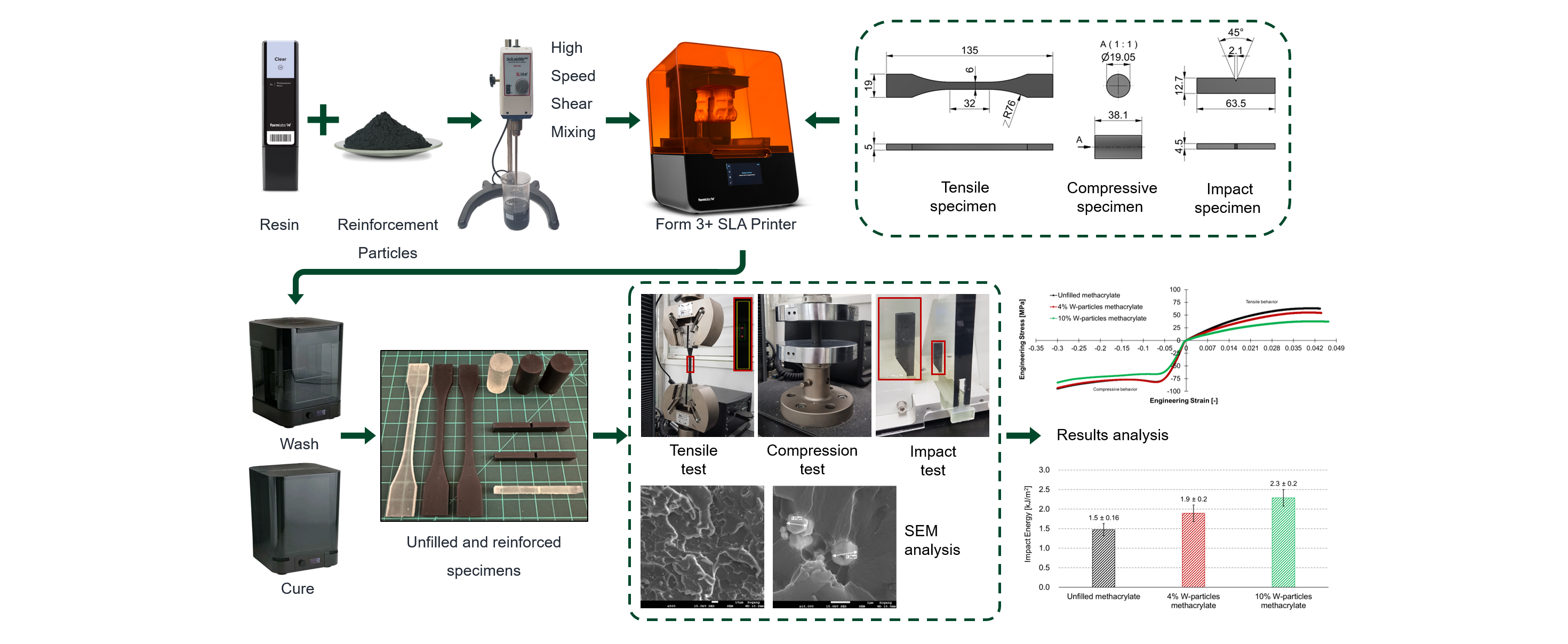
Manufacturing process of tungsten (W) particles-reinforced SLA methacrylate and mechanical properties investigation with uniaxial tensile, uniaxial compressive and Izod impact test;
Production of SLA methacrylate specimens for material characterization under different curing settings and strain rates;
Analysis of relationship between SLA process settings, curing parameters and material geometries to optimize the mechanical response.










